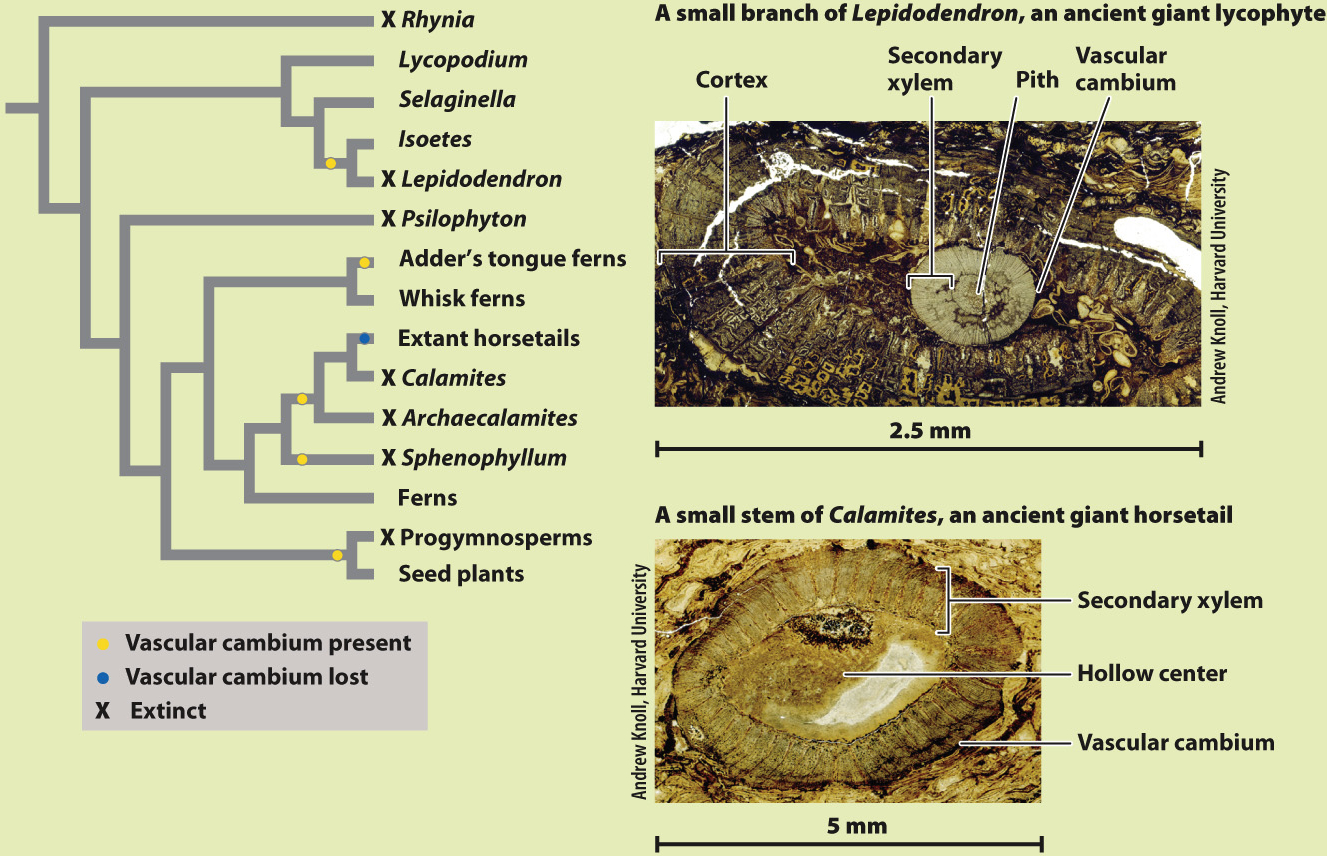HOW DO WE KNOW?
FIG. 33.10
Did woody plants evolve more than once?
OBSERVATIONS Today, the vascular cambium occurs almost exclusively among seed plants, with only limited development of secondary xylem in some adder’s tongue ferns and quillwort lycophytes (Isoetes species). The fossil record, however, shows that other plants, now extinct, also had a vascular cambium.
HYPOTHESIS The vascular cambium evolved convergently in several different groups of vascular plants.
EXPERIMENT AND RESULTS The vascular cambium is recorded in fossils by xylem cells in rows oriented radially in the stem or root. Thus, the giant tree lycophytes of Carboniferous coal swamps (the top photo) had a vascular cambium, as did extinct tree-

CONCLUSION Fossils and phylogeny support the hypothesis that the vascular cambium and, hence, wood evolved more than once, reflecting a strong and persistent selection for tall sporophytes among vascular plants.
SOURCE Taylor, T. N., E. L. Taylor, and M. Krings. 2009. Paleobotany. Amsterdam: Elsevier.